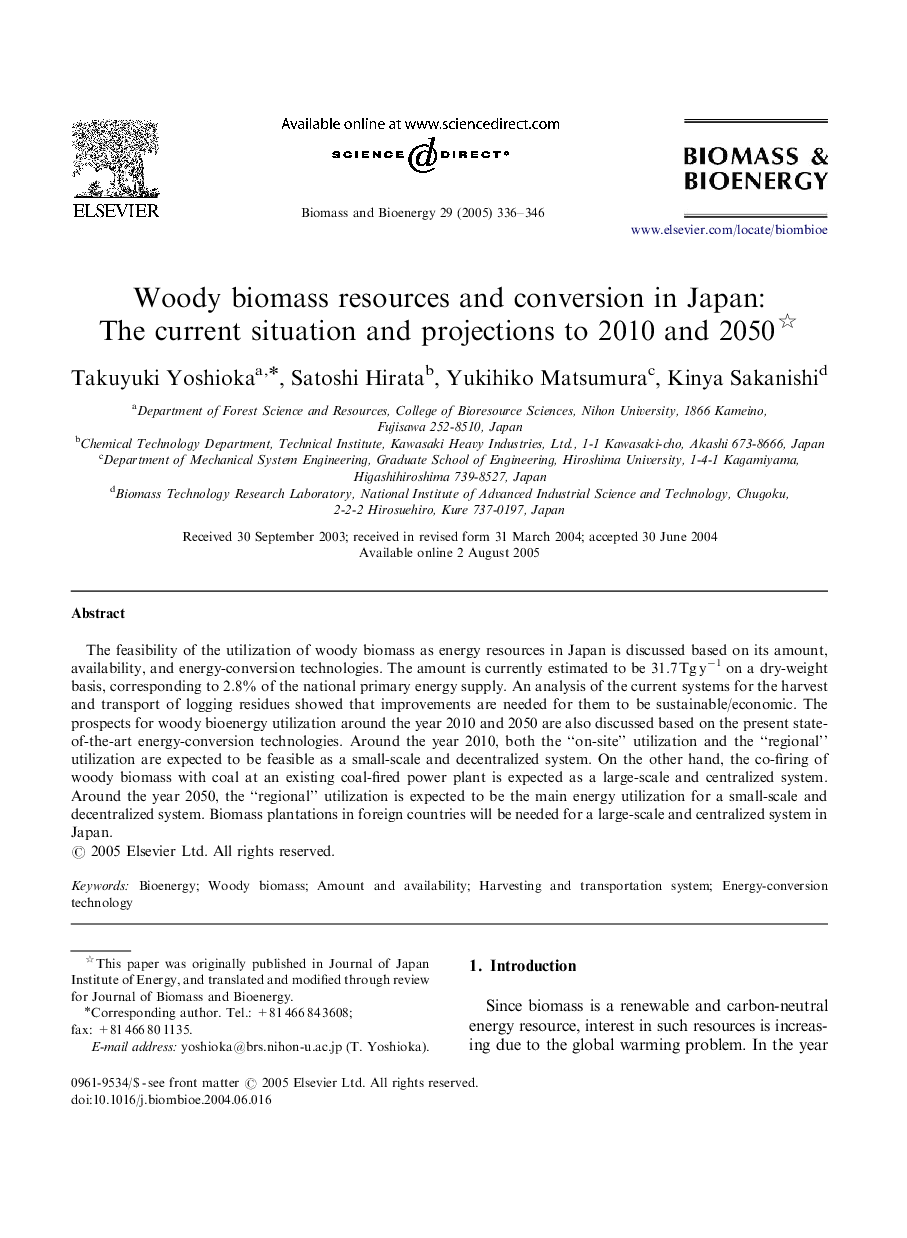| Article ID | Journal | Published Year | Pages | File Type |
|---|---|---|---|---|
| 10394046 | Biomass and Bioenergy | 2005 | 11 Pages |
Abstract
The feasibility of the utilization of woody biomass as energy resources in Japan is discussed based on its amount, availability, and energy-conversion technologies. The amount is currently estimated to be 31.7 Tg yâ1 on a dry-weight basis, corresponding to 2.8% of the national primary energy supply. An analysis of the current systems for the harvest and transport of logging residues showed that improvements are needed for them to be sustainable/economic. The prospects for woody bioenergy utilization around the year 2010 and 2050 are also discussed based on the present state-of-the-art energy-conversion technologies. Around the year 2010, both the “on-site” utilization and the “regional” utilization are expected to be feasible as a small-scale and decentralized system. On the other hand, the co-firing of woody biomass with coal at an existing coal-fired power plant is expected as a large-scale and centralized system. Around the year 2050, the “regional” utilization is expected to be the main energy utilization for a small-scale and decentralized system. Biomass plantations in foreign countries will be needed for a large-scale and centralized system in Japan.
Keywords
Related Topics
Physical Sciences and Engineering
Chemical Engineering
Process Chemistry and Technology
Authors
Takuyuki Yoshioka, Satoshi Hirata, Yukihiko Matsumura, Kinya Sakanishi,
